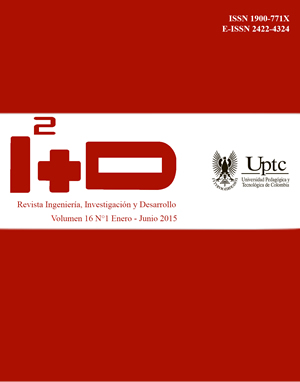Mapping objects through a data motor NoSQL case study: framework for web applications development

Abstract
This article emerged as an academic initiative in which it is observed that the areas of knowledge in software develop- ment under the paradigm of Object-oriented programming (OOP) is confronted by a model data storage relational raising two scenarios different developers try to mitigate through conversions between types or using intermediate tools such as mapping relational objects that bring certain advantages and disadvantages, and therefore, was raised within the project the possibility of using a storage engine type non-relational or NoSQL.With the design and development of the framework for generating Web applications, the user can define objects to consider including in the application, which will be stored in MongoDB engine, which arranges the data in the form of documents. The dynamic structure of these documents can be used in many projects, including many who traditionally would work on relational databases.Aiming to socialize and evaluate the work done, some instruments were designed to collect information from users with experience in the field of databases and software development. As a result highlights that software developers have clear concepts of object persistence through object-relational mapping (ORM), that learning these techniques software development through implementing own code or using APIs have a high degree of complexity and mostly (60%) they are aware that these implementations generate low performance in applications. In addition, the opening of these highlights to choose alternative to organize and store information, different to the relational approach used for several years.
Keywords
database, framework, object relational mapping, mongodb, nosql, java
References
- Bransford, J., Brown, A. & Cocking, R. (2004). How People Learn: Brain, Mind, Experience, and School. Washington DC: National Academy Press.
- DOI: 10.17226/9853.http://dx.doi.org/10.17226/9853
- Bustacara, C. J. (2010). Evaluación computacional para calcular los polinomios de Legendre de primera clase. Avances en Sistemas e Informática, 7(2), 131-138.
- Chickering, A. & Ehrmann, S. (1996). Implementing the Seven Principles: Technology as Lever. American Association for Higuer Education, 3-6.
- Egas, M. E. (2014). Simulación computacional de la trayectoria de electrones de incepción en un tramo corto de aire. Quito, Ecuador: Editorial Quito.
- García, A., Martín, J. A. & Gutiérrez, M. T. (2010). Modelo computacional para la formación de clases de equivalencia. International Journal of Psychology and Psychological Therapy, 10(1), 163-176.
- Landau, R., Páez, M. J. & Bordeianu, C. (2010). A survey of Computational Physics. Oxford: Princeton University Press.
- López, O. R., Narváez, C. A. & Garzón, D. A. (2012). Modelos computacionales del comportamiento del cartílago articular. Revista Cubana de Investigaciones Biomédicas, 31(2), 373-385.
- Overholt, K. (2010). Numerical Pyromaniacs: The Use of Python in Fire Research. 9th Python in Science Conference SCIPY.
- Panou, T. (2008). Management of Learning Ways: a Radiographer's
- Sener, J. (1997). Constructivism: Asynchronous Learning Networks. ALN Magazine, 1, 1.
- Vargas, W. & Murcia, J. C. (2005). Distribución de fuerzas en medios granulares no cohesivos: observaciones experimentales y computacionales. Ciencia e Ingeniería Neogranadina, (15), 138-150.
- Vilchez, A., Marzocchi, V., Beldoménico, H. & Vanzetti,N. (2013). Uso de software Libre para un portal de compuestos orgánicos persistentes. 10mas Jornadas Argentinas de software Libre. Buenos Aires.
- Yasar, O. (2006). A computational technology approach to education. Computing in Science and Engineering,8(3), 76-81.
- http://dx.doi.org/10.1109/MCSE.2006.37
- Yasar, O. & Landau, R. (2003). Elements of computational Science and engineering Education. Society for Industrial and Applied Mathematics, 45(4), 787-805. DOI: 10.1137/S0036144502408075
- http://dx.doi.org/10.1137/S0036144502408075
- Zamarro, J., Molina, G. & Nú-ez, M. (2004). Teaching Physics Modelling with Graphic Simulations Tools. HSCI.